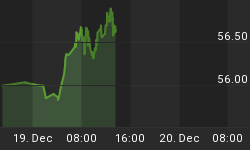
Mixed Message For Manufacturing
Stock prices have a high correlation to economic activity and earnings. History tells us bear markets are often kicked-off by recessions. Recent economic data does not hint at an imminent recession. However, a mixed message came in a September 15 report on industrial production. From The Wall Street Journal:
U.S. industrial production fell in August for the first time since January, the latest sign of uneven improvement in the economy..."The trend in the data still looks decent, but has moderated noticeably from the much stronger gains reported earlier this year," said J.P. Morgan Chase economist Daniel Silver.
What Is Dow Theory?

Dow Theory's stance has changed in the last 30 days; this article covers the recent improvement in the observable evidence. Before we cover the updated charts, it is important to revisit the fundamental concepts they convey. Dow Theory is based on a series of Wall Street Journal articles written by Charles Dow. The basic tenets are easy to understand. Charles Dow believed that:
- In order for industrial companies to increase their earnings, they had to produce and sell more goods.
- If industrial companies are selling more goods, then transportation companies must be delivering more goods to retailers and wholesalers.
- Therefore, in a healthy economy, both industrial companies and transportation companies should be experiencing revenue growth.
- If industrial and transportation companies are growing their revenues, then the industrial and transportation stocks should be attractive to investors.
- If industrial and transportation companies are doing well and are attractive to investors, both the Dow Jones Industrial Average and the Dow Jones Transportation Average should be making new highs in unison, serving to confirm a healthy economy.
Signal: That Was Then
If investors believe industrial and transportation stocks are healthy and thus, attractive investments, that speaks to demand. When demand is strong, stock prices rise. On September 2, the Dow Jones Industrial Average (DIA) was unable to post a new closing high, leaving an economic divergence in place relative to the high made in the Dow Jones Transportation Average (see charts below). The inability of the Dow to post a new closing high was an economic yellow flag according to Dow Theory (see point 5 in the list above).

Signal: This Is Now
In Wednesday's session both the Dow Jones Industrial Average and the Dow Jones Transportation Average made new highs. Therefore, the concerning economic non-confirmation has been taken off the table.

How Can This Help Us?
Everything we do revolves around probabilities and an uncertain future. The new highs in the Dow and Trannies tell us investor confidence in earnings, economic activity, and Fed policy is better than it was a few weeks ago when the Dow was unable to sustain a new high. Sustainability is still important. If the new highs are followed by weakness and a retreat below 16,368 on the Dow, it brings us back into a lower investor conviction realm. The longer the Dow stays above 17,138, the better for the bulls from an "odds of good things happening" perspective.
Investment Implications - The Weight Of The Evidence
Have the observable evidence and hard data been helpful prior to and after Wednesday's Fed statement? Yes, the S&P 500 (SPY) closed Monday at 1984, which was near a support level we noted last week. Our market model also told us to be patient heading into the Fed (see Monday tweet below).

Last week's uncertainty called for a slight reduction in our equity exposure. We headed into the week with U.S. stocks (VTI), leading sectors, including transportation (IYT), offset by a relatively small stake in bonds (TLT). If the S&P 500 can post a new closing high Thursday (above 2007), then the evidence may call for an "incremental add" to our equity-based holdings.
Bullish, But Highly Flexible
With the Fed on the verge of a policy shift, we will take nothing for granted. The markets will need to be monitored a bit more closely in the coming months. The evidence will guide us if we are willing to listen.
Traffic light image Lawrence Rayner via Flicker (altered).















